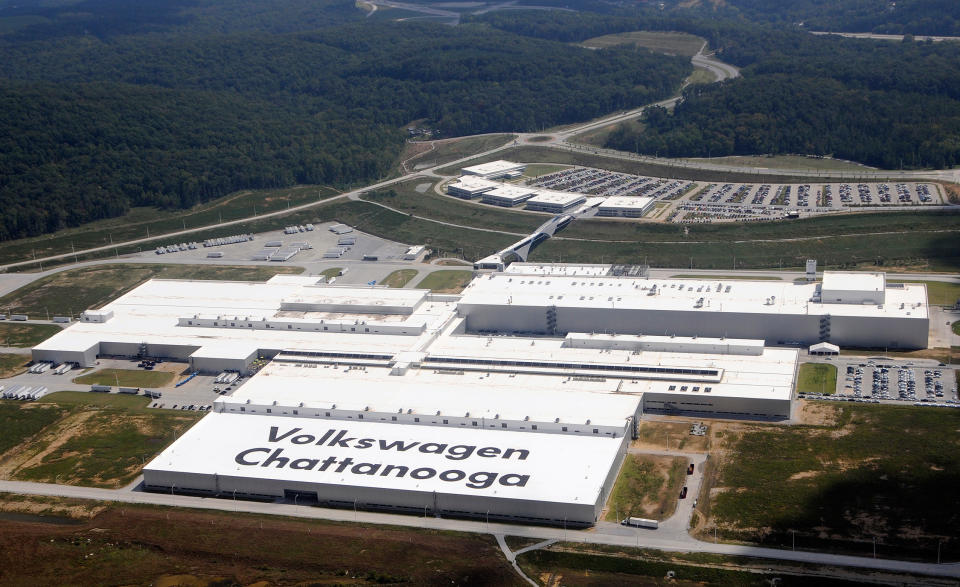It's Too Late Not to Get Political About Cars; They've Always Been Political


From the February 2018 issue
As statistics go, here’s a knee-buckler: The cost of one minute of automobile manufacturing in the U.S. is $460,706. So says Ultimaker, a supplier of 3D printing tools. (Question: Once you have a 3D printer, can’t you use it to make another one?)
I love when massive stats like that are broken down to the last dollar. Were those final six bucks invoiced for, say, a ham on rye in Hamtramck? If you wonder why politicians flock to auto plants for photo ops, refer to the statistic above. In a book I just read, it’s said that polar bears can smell humans five miles distant. Big deal. Politicians can smell money all the way from the Potomac.
I mention politicians because right now I’m all puffed up over the likelihood that EPA administrator Scott Pruitt will reverse Obama’s fuel-mileage standards for 2025. This from a man who just nicked taxpayers to the tune of $24,570 for a soundproof booth so that no one could hear his phone conversations. It’s like asking the other Scott Pruett—the champion racer—to rewrite IMSA’s rulebook just before climbing into his Lexus at Daytona. Isn’t a sudden change in fuel-economy standards a sucker punch in the schnoz of engineers toiling late into the Ambien hours to invent yet more efficient internal-combustion engines? How’d you feel if, for the previous six years, you’d labored over fuel-flow rates on a compression-ignition gas engine only to have your boss say, “Hey, Jimbo, never mind”? What if that engine had been destined to become the car-enthusiast meat in a Miata sandwich? Isn’t there value in cheering for the most efficient internal-combustion engines possible, especially in the face of automated 12-passenger commuter pods?
And for the love of heim joints and the wrath of Ferdinand Piëch, do not castigate me for bringing up politics. Your car’s fuel economy is hugely political. The Monroney sticker on your car’s window was named after a U.S. senator. The ratings on your tires’ sidewalls are political. As are your seatbelts, your airbags, all your emissions equipment, the crash beams in your doors, the type of headlights you can use, your shatter-resistant glass, the escape latch inside your trunk, the aftermarket parts you can legally attach, the strength of your bumpers and roof, the text of the ads from your dealership, the type of paint a manufacturer can spray, not to mention mandated ABS and stability control. Even the guys who build your car—in their union brawls—are longingly, obsessively political. And I’ll bet all the assembly robots are Marxists.
When were cars not political? You’d have to ask Karl Benz. Or Ferdinand Porsche, a man who invented a car beloved by all but at the behest of politicians wearing tall boots. By the way, Porsche is also credited with one of the first gas-electric hybrids. He called it the Overloaded Ferry. Half of that is true.
I could go on. I will. Would Tesla be Tesling without federal assistance? Would GM’s upcoming mid-engined Corvette be aborning sans bailout? I remember when Toyota sold its millionth Prius in the U.S., something that wouldn’t have been possible without federally offered tax incentives. If you like interstate freeways, repeat after me: “I like Ike.” Right now, let’s all try to conjure any consumer product less often pummeled by political appendages pushing, shoving, and occasionally kicking in the buttock region.
Last summer, an oversize TV mouth insisted that NASCAR’s plunge in viewership was due to the government shaping modern cars into something enthusiasts don’t recognize. Oh, brother. For how many years have buyers—all by themselves—been resisting sedans, the very Fusions, SSs, and Camrys running circles in the Monster Energy series? Also, when a racing series annually televises 40-some multihour shows, doesn’t it run the risk of cheapening the product? And there’s this: Between 1983 and 2014, the percentage of hormonal 16-year-olds with a driver’s license fell from 46 to just 25. The feds didn’t do that. Time dedicated to Snapchat, Brother Zuckerberg, tattoos, and hand-ripped jeans did that.
Please don’t get upset, but it strikes me that—considering all the government’s automotive intrusions—it’s tricky to pinpoint which has been a full-on cow pie in the craggy face of reason. Seatbelts? Rollover standards? I originally thought CHMSLs and DRLs were little more than mandatory Christmas lights, but safety studies suggest they also brighten Easter. Okay, the chimes warning that your seatbelt is unfastened—that was a mistake.
I just read a piece in the New York Review in which it’s alleged that roughly 2 percent of projects partly financed by the federal government have tanked. That’s it. And, yes, Mr. Doubtfire, that includes Solyndra. From what I can tell in matters automotive, our government has gotten it right more often than wrong. I mean, think how considerately the feds have usually left us to our own vehicular mayhem. Two words of proof: Dodge Demon. I was going to say “LaFerrari,” but I don’t know if that’s one word or two.

 Yahoo Autos
Yahoo Autos 